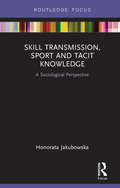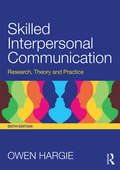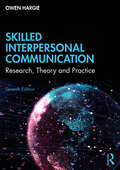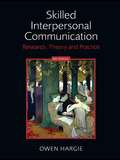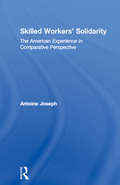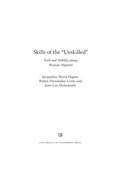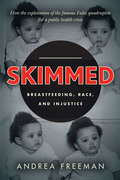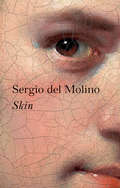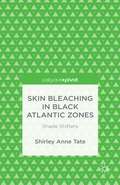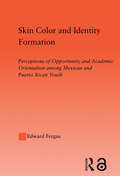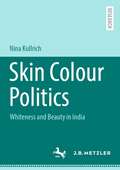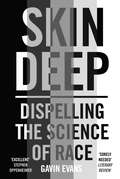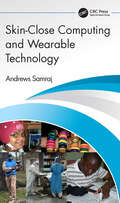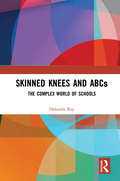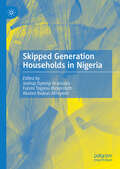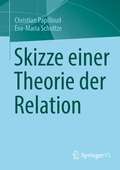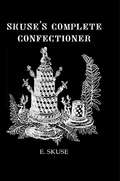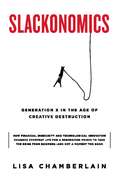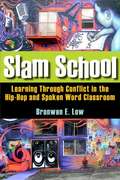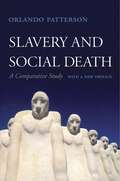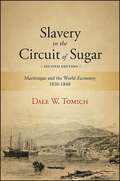- Table View
- List View
Skill Transmission, Sport and Tacit Knowledge: A Sociological Perspective (Routledge Focus on Sport, Culture and Society)
by Honorata JakubowskaTeaching the skills necessary to play sport depends partly on transmitting knowledge verbally, yet non-verbal or tacit knowledge also has an important role. A coach may tell a young athlete to 'move more dynamically', but it is undoubtedly easier to demonstrate with the body itself how this should be done. Skills such as developing a 'feel for the water' cannot simply be transmitted verbally; they are embodied in the tacit knowledge acquired from practice, repetition and experience. This is the first sociological study of the transmission of skills through tacit knowledge in sport. Drawing on philosophy, sociology and theories of embodiment, it presents original research gathered from qualitative empirical studies of young athletes. It discusses the concept of tacit knowledge in relation to motor skills transmission in a variety of sports, including athletics, swimming and judo, and examines the methodological possibilities of studying tacit knowledge, as well as its challenges and limitations. This is fascinating reading for all those with an interest in the sociology of sport, theories of embodiment, or skill acquisition and transmission.
Skilled Interpersonal Communication: Research, Theory and Practice
by Owen HargieThere is a fundamental, powerful, and universal desire amongst humans to interact with others. People have a deep-seated need to communicate, and the greater their ability in this regard the more satisfying and rewarding their lives will be. The contribution of skilled interpersonal communication to success in both personal and professional contexts is now widely recognised and extensively researched. As such, knowledge of various types of skills, and of their effects in social interaction, is crucial for effective interpersonal functioning. Previous editions have established Skilled Interpersonal Communication as the foremost textbook on communication. This thoroughly revised and expanded 6th edition builds on this success to provide a comprehensive and up-to-date review of the current research, theory and practice in this popular field of study. The first two chapters introduce the reader to the nature of skilled interpersonal communication and review the main theoretical perspectives. Subsequent chapters provide detailed accounts of the fourteen main skill areas, namely: nonverbal communication; reinforcement; questioning; reflecting; listening; explaining; self-disclosure; set induction; closure; assertiveness; influencing; negotiating; and interacting in, and leading, group discussions. Written by one of the foremost international experts in the field and founded solidly in research, this book provides a key reference for the study of interpersonal communication. This theoretically informed yet practically oriented text will be of interest both to students of interpersonal communication in general, and to qualified personnel and trainees in many fields.
Skilled Interpersonal Communication: Research, Theory and Practice
by Owen HargieEstablished as the foremost textbook on communication, the seventh edition of Owen Hargie’s Skilled Interpersonal Communication is thoroughly revised and updated with the latest research findings, theoretical developments and applications. The contribution of skilled interpersonal communication to success in both personal and professional contexts is now widely recognised and extensively researched. People have a deep-seated and universal need to interact with others, and the greater their communicative ability the more satisfying and rewarding will be their lives. The main focus of this book is on the identification, analysis and evaluation of the core skills needed in these interactions. The first two chapters provide details of the nature of interpersonal communication and socially skilled performance, respectively, with a review of the main theoretical perspectives pertaining to each. The book then offers detailed accounts of the fourteen main skill areas: nonverbal communication, reinforcement, questioning, reflecting, listening, explaining, self-disclosure, set induction, closure, assertiveness, influencing, negotiating and interacting in and leading group discussions. The book concludes with a discussion on the ethical issues in interpersonal communication. This new edition also features an extended section on groupthink and analyses the impact of the coronavirus pandemic on aspects such as greeting patterns and the effectiveness of Project Fear by the UK government to secure citizen compliance. Written by one of the foremost international experts in the field, this is essential reading for students of interpersonal communication in general and to qualified personnel and trainees in many fields.
Skilled Interpersonal Communication: Research, Theory and Practice, 5th Edition
by Owen HargieThere is a fundamental, powerful, and universal desire amongst humans to interact with others. People have a deep-seated need to communicate, and the greater their ability in this regard the more satisfying and rewarding their lives will be. The contribution of skilled interpersonal communication to success in both personal and professional contexts is now widely recognised and extensively researched. As such, knowledge of various types of skills, and of their effects in social interaction, is crucial for effective interpersonal functioning. Previous editions have established Skilled Interpersonal Communication as the foremost textbook on communication. This thoroughly revised and expanded 5th edition builds on this success to provide a comprehensive and up-to-date review of the current research, theory and practice in this burgeoning field of study. The first two chapters introduce the reader to the nature of skilled interpersonal communication and review the main theoretical perspectives. Subsequent chapters provide detailed accounts of the fourteen main skill areas, namely: nonverbal communication; reinforcement; questioning; reflecting; listening; explaining; self-disclosure; set induction; closure; assertiveness; influencing; negotiating; and interacting in, and leading, group discussions. Written by one of the foremost international experts in the field and founded solidly in research, this book provides a key reference for the study of interpersonal communication. This theoretically informed, yet practically oriented text will be of interest both to students of interpersonal communication in general, and to qualified personnel and trainees in many fields.
Skilled Workers' Solidarity: The American Experience in Comparative Perspective (States and Societies #Vol. 7)
by Antoine JosephA comparative historical analysis of capitalist democracy, focusing on development in the United States and offering comparisons with other Western nations.
Skills of the "Unskilled"
by Jacqueline HaganMost labor and migration studies classify migrants with limited formal education or credentials as "unskilled." Despite the value of migrants' work experiences and the substantial technical and interpersonal skills developed throughout their lives, the labor-market contributions of these migrants are often overlooked and their mobility pathways poorly understood. Skills of the "Unskilled" reports the findings of a five-year study that draws on research including interviews with 320 Mexican migrants and return migrants in North Carolina and Guanajuato, Mexico. The authors uncover these migrants' lifelong human capital and identify mobility pathways associated with the acquisition and transfer of skills across the migratory circuit, including reskilling, occupational mobility, job jumping, and entrepreneurship.
Skimmed: Breastfeeding, Race, and Injustice
by Andrea FreemanBorn into a tenant farming family in North Carolina in 1946, Mary Louise, Mary Ann, Mary Alice, and Mary Catherine were medical miracles. Annie Mae Fultz, a Black-Cherokee woman who lost her ability to hear and speak in childhood, became the mother of America's first surviving set of identical quadruplets. They were instant celebrities. Their White doctor named them after his own family members. He sold the rights to use the sisters for marketing purposes to the highest-bidding formula company. The girls lived in poverty, while Pet Milk's profits from a previously untapped market of Black families skyrocketed. Over half a century later, baby formula is a seventy-billion-dollar industry and Black mothers have the lowest breastfeeding rates in the country. Since slavery, legal, political, and societal factors have routinely denied Black women the ability to choose how to feed their babies. In Skimmed, Andrea Freeman tells the riveting story of the Fultz quadruplets while uncovering how feeding America's youngest citizens is awash in social, legal, and cultural inequalities. This book highlights the making of a modern public health crisis, the four extraordinary girls whose stories encapsulate a nationwide injustice, and how we can fight for a healthier future.
Skin
by Sergio del MolinoSkin is the border of our body and, as such, it is that through which we relate to others but also what separates us from them. Through skin, we speak: when we display it, when we tan it, when we tattoo it, or when we mute it by covering it with clothes. Skin exhibits social relationships, displays power and the effects of power, explains many things about who we are, how others perceive us and how we exist in the world. And when it gets sick, it turns us into monsters. In Skin, Sergio del Molino speaks of these monsters in history and literature, whose lives have been tormented by bad skin: Stalin secretly taking a bath in his dacha, Pablo Escobar getting up late and shutting himself in the shower, Cyndi Lauper performing a commercial for a medicine promising relief from skin disease, John Updike sunburned in the Caribbean, Nabokov writing to his wife from exile, ‘Everything would be fine, if it weren’t for the damned skin.’ As a psoriasis sufferer, Sergio del Molino includes himself in this gallery of monsters through whose stories he delves into the mysteries of skin. What is for some a badge of pride and for others a source of anguish and shame, skin speaks of us and for us when we don’t speak with words.
Skin Bleaching in Black Atlantic Zones: Shade Shifters
by S. TateThis book's discussion of skin bleaching, lightening and toning in Black Atlantic zones disengages with the usual tropes of Black Nationalism and global white supremacy such as 'the desire to be white', 'low self-esteem' and 'self-hatred' and instead engages with the global multi-billion dollar market in lighter skins with products from local cosmetic and pharmaceutical companies and entrepreneurs. This practice can be for short-term strategic purposes and the production of bleached lightness and new subjectivities through skin shades across Black Atlantic zones - the UK, USA, Caribbean, Latin America and the Africa continent- is also a simultaneous critique of continuing pigmentocracy and darker skin disadvantage. This book seeks to decolonize skin bleaching, lightening and toning by exploring its racialized gender political and libidinal economies in the Black Atlantic. In so doing it moves past the notion that global white supremacy dynamizes the practice to a position where the interaction of colourism and 'post-race' neo-liberal racialization aesthetics becomes the focus.
Skin Color and Identity Formation: Perception of Opportunity and Academic Orientation Among Mexican and Puerto Rican Youth (Latino Communities: Emerging Voices - Political, Social, Cultural and Legal Issues)
by Edward FergusThe focus of this study is on the ways in which skin color moderates the perceptions of opportunity and academic orientation of 17 Mexican and Puerto Rican high school students. More specifically, the study's analysis centered on cataloguing the racial/ethnic identification shifts (or not) in relation to how they perceive others situate them based on skin color.
Skin Colour Politics: Whiteness and Beauty in India
by Nina KullrichThe global practice of skin bleaching is predominantly understood as an internalized legacy of colonialism and an embodiment of Western ideals of beauty. This book offers a new perspective on fair skin preference in India: it challenges the assumption that desires for light skin are always a desire of whiteness. Rather than talking back to the colonial centre, skin colour politics reorganise and reinforce social distinctions in Indian societies, which are neither exclusively local nor global. Based on primary research conducted in Delhi, this multi-dimensional study shows how skin colour intersects with and reproduces other categories of social distinction – primarily gender, class, caste, race, region and religion. It historically embeds fairness as an Indian, precolonial yet transnational ideal of beauty. The bleached body emerges as an active and thus, potentially resistant part of negotiating social status within multiple power relations and complex beauty regimes. By mapping a whole geography of skin colours in India, this book shows how fair skin as a locally embedded beauty norm and whiteness as a global cultural imperative interrelate.
Skin Deep: Journeys in the Divisive Science of Race
by Gavin EvansEverything you need to know about race (but were afraid to ask). MYTH: Early Europeans were white. REALITY: The first Europeans had dark skin, black, curly hair and blue eyes. MYTH: Between 50,000 and 70,000 years ago, a &‘cognitive revolution&’ led to the birth of culture in Europe. REALITY: Modern intelligence evolved tens of thousands of years earlier, leading to the birth of culture in Africa.Does racism have a rational basis in science? In Skin Deep, Gavin Evans tackles head-on the debate that has been raging on internet message boards and in academic journals. No longer limited to the fringe, race-based studies of intelligence have been discussed by thinkers such as Sam Harris and Jordan Peterson. If these studies were true, they would provide an intellectual justification for inequality and discrimination. Examining the latest research on how intelligence develops and laying out new discoveries in genetics, palaeontology, archaeology and anthropology to unearth the truth about our shared past, Skin Deep demolishes the pernicious myth that our race is our destiny and instead reveals what really makes us who we are.
Skin-Close Computing and Wearable Technology
by Andrews SamrajThis book explains the concept of wearable computing, need for wearable technology, its advantages, application areas, state of art developments in this area, required material and technology, possible future applications including cyborg developments and the need for this sphere of influence in the future. The scope encompasses three major components, wearable computing (next generation of conventional computing, ergonomics), wearable technology (medical support, rehabilitation engineering, assistive technology support devices, army/combat usage) and allied technologies (miniature components, reliability, high performance integration, cyber physical systems, robotics). Aids reader to recognize the need and functional operations of a wearable computing device Includes diversified examples and case studies from different domains Presents a hybrid concept relating medical care and augmented reality Illustrates product level description examples and research ideas for future development Introduces various wearable technologies and other related technologies for enabling wearable computing This book is aimed at senior undergraduate, graduate students and researchers in computer and biomedical engineering, bioinstrumentation, biosensors, and assistive technology.
Skinned Knees and ABCs: The Complex World of Schools
by Debarshi RoySkinned Knees and ABCs critically analyzes schools as sites for applied behaviour systems. It delves deep into the origin of various behavioural theories that affect these institutions and utilizes scientific theories in mathematics, behavioural economics and psychology (social, cognitive and educational) to examine the complexities, failures and successes of school systems. The book discusses the complex and chaotic nature of schools and the fundamental psychological constructs which form the basis for curriculum and behavioural designs. It also highlights the problems and peculiarities faced by students, parents and educators and suggests alternatives and solutions through real-life case studies. Drawing on in-depth research and theoretical know-how, the book will be of interest to students, teachers and researchers of school education, organizational behaviour, behavioural sciences and applied psychology. It will also be of interest to parents of school-going children, school management heads, policy makers and educators.
Skipped Generation Households in Nigeria
by Joshua Oyeniyi Aransiola Funmi Togonu-Bickersteth Akanni Ibukun AkinyemiThis volume unpacks the phenomenon of skipped generation households—where children live with their grandparents and without their parents—as they become an increasingly common family dynamic in Nigeria and globally. The skipped generation household's emergence in sub-Saharan Africa has been driven by factors including the HIV/AIDS epidemic, labour-based migration, and ethno-religious conflicts. By examining the data from a national study on skipped generation households in Nigeria, contributions track benefits, opportunities, and effects associated with growing up in these households. Details including academic performance and career aspirations for grandchildren, as well as social-psychological and physical well-being of both them and their grandparents, are explored.
Skizze einer Theorie der Relation
by Christian Papilloud Eva-Maria SchultzeMit Relation in den unterschiedlichen Deklinationen dieses Begriffes als Beziehung, Interaktion, Austausch, Verhältnis usw. wird eine Fundierung der soziologischen Theorie auf der Mikroebene der Zwischenmenschlichkeit nahegelegt, wovon es genüge, deren Emergenz in vorausgesetzten nachfolgenden höheren Stufen nachzuzeichnen, um sie als Wurzel der Gesellschaft zu verstehen. Dabei geht oft die Überlegung verloren, nach der sich eine Gesellschaft auch im Rücken der Akteure herausbilden kann, ohne dass sie es wollen und ohne dass sie daran tatsächlich teilhaben. Im Vergleich zur Forschungsperspektive der relationalen Soziologie und den diversen angegliederten Formen des Interaktionismus in der Soziologie hat Pierre Bourdieu in seinem soziologischen Werk eine solche kritische Position bezogen und kompromisslos für einen makro-relationalen Ansatz in der Soziologie geworben. Damit hat er die Grundlage einer Überlegung zur Relation als Makrobegriff gelegt, der nicht etwa einen alternativen Ansatz in den Bereich der existierenden relationalen Soziologie einführt, sondern als Hauptansatz einer soziologischen Theorie zu verstehen ist. In diesem Band wird dieser Weg sowohl im Kontrast zu der relationalen Soziologie als auch im Kontrast zur Theorie Bourdieus beschritten, woraus eine entsprechende Theorie der Relation für die soziologische Theorie gewonnen wird.
Skulls to the Living, Bread to the Dead: The Day of the Dead in Mexico and Beyond
by Stanley H. Brandes<p>Each October, as the Day of the Dead draws near, Mexican markets overflow with decorated breads, fanciful paper cutouts, and whimsical toy skulls and skeletons. To honor deceased relatives, Mexicans decorate graves and erect home altars. Drawing on a rich array of historical and ethnographic evidence, this volume reveals the origin and changing character of this celebrated holiday. It explores the emergence of the Day of the Dead as a symbol of Mexican and Mexican-American national identity. <p>Skulls to the Living, Bread to the Dead poses a serious challenge to the widespread stereotype of the morbid Mexican, unafraid of death, and obsessed with dying. In fact, the Day of the Dead, as shown here, is a powerful affirmation of life and creativity. Beautifully illustrated, this book is essential for anyone interested in Mexican culture, art, and folklore, as well as contemporary globalization and identity formation.</p>
Skuse'S Complete Confectioner
by SkuseFirst published in 2005. Routledge is an imprint of Taylor & Francis, an informa company.
Slackonomics: Generation X in the Age of Creative Destruction
by Lisa ChamberlainGeneration X grew up in the 1980s, when Alex P. Keaton was going to be a millionaire by the time he was thirty, greed was good, and social activism was deader than disco. Then globalization and the technological revolution came along, changing everything for a generation faced with bridging the analog and digital worlds. Living in a time of “creative destruction” – when an old economic order is upended by a new one – has deeply affected everyday life for this generation; from how they work, where they live, how they play, when they marry and have children to their attitudes about love, humor, happiness, and personal fulfillment. Through a sharp and entertaining mix of pop and alt-culture, personal narrative, and economic analysis, author Lisa Chamberlain shows how Generation X has survived and even thrived in the era of creative destruction, but will now be faced with solving economic and environmental problems on a global scale.
Slam School: Learning Through Conflict in the Hip-hop and Spoken Word Classroom
by Bronwen E. LowIn this study, Low (education, McGill U. , Canada) relates how a white teacher implemented the study of hip-hop and spoken word culture into urban high school language arts classes, which she co-taught and helped develop the curriculum for. She analyzes the dynamics of teaching and learning in these classes to argue that the reasons that teachers and administrators resist introducing hip-hop into curriculum--its complex issues of gender, violence, sexuality, materialism, race, and language--are what make it important pedagogically. She focuses on African American youth in interaction with white youth, teachers, and administrators, describing the student's exploration of poetry performance and writing and their experiences with the language of the hip-hop culture. Annotation ©2011 Book News, Inc. , Portland, OR (booknews. com)
Slang across Societies: Motivations and Construction
by Jim DavieSlang Across Societies is an introductory reference work and textbook which aims to acquaint readers with key themes in the study of youth, criminal and colloquial language practices. Focusing on key questions such as speaker identity and motivations, perceptions of use and users, language variation, and attendant linguistic manipulations, the book identifies and discusses more than 20 in-group and colloquial varieties from no fewer than 16 different societies worldwide. Suitable for advanced undergraduate and postgraduate students working in areas of slang, lexicology, lexicography, sociolinguistics and youth studies, Slang Across Societies brings together extensive research on youth, criminal and colloquial language from different parts of the world.
Slavery and Forced Migration in the Antebellum South
by Damian Alan PargasAmerican slavery in the antebellum period was characterized by a massive wave of forced migration as millions of slaves were moved across state lines to the expanding southwest, scattered locally, and sold or hired out in towns and cities across the South. This book sheds new light on domestic forced migration by examining the experiences of American-born slave migrants from a comparative perspective. Juxtaposing and contrasting the experiences of long-distance, local, and urban slave migrants, it analyzes how different migrant groups anticipated, reacted to, and experienced forced removal, as well as how they adapted to their new homes.
Slavery and Social Death: A Comparative Study, With a New Preface
by Orlando Patterson<p>This is the first full-scale comparative study of the nature of slavery. In a work of prodigious scholarship and enormous breadth, which draws on the tribal, ancient, premodern, and modern worlds, Orlando Patterson discusses the internal dynamics of slavery in sixty-six societies over time. These include Greece and Rome, medieval Europe, China, Korea, the Islamic kingdoms, Africa, the Caribbean islands, and the American South. Slavery is shown to be a parasitic relationship between master and slave, invariably entailing the violent domination of a natally alienated, or socially dead, person. The phenomenon of slavery as an institution, the author argues, is a single process of recruitment, incorporation on the margin of society, and eventual manumission or death. <p>Distinctions abound in this work. Beyond the reconceptualization of the basic master-slave relationship and the redefinition of slavery as an institution with universal attributes, Patterson rejects the legalistic Roman concept that places the "slave as property" at the core of the system. Rather, he emphasizes the centrality of sociological, symbolic, and ideological factors interwoven within the slavery system. Along the whole continuum of slavery, the cultural milieu is stressed, as well as political and psychological elements. Materialistic and racial factors are deemphasized. The author is thus able, for example, to deal with "elite" slaves, or even eunuchs, in the same framework of understanding as fieldhands; to uncover previously hidden principles of inheritance of slave and free status; and to show the tight relationship between slavery and freedom. <p>Interdisciplinary in its methods, this study employs qualitative and quantitative techniques from all the social sciences to demonstrate the universality of structures and processes in slave systems and to reveal cross-cultural variations in the slave trade and in slavery, in rates of manumission, and in the status of freedmen. Slavery and Social Death lays out a vast new corpus of research that underpins an original and provocative thesis.</p>
Slavery in the Circuit of Sugar, Second Edition: Martinique and the World-Economy, 1830-1848 (SUNY Press Open Access)
by Dale W. TomichA classic text long out of print, Slavery in the Circuit of Sugar traces the historical development of slave labor and plantation agriculture in Martinique during the period immediately preceding slave emancipation in 1848. Interpreting these events against the broader background of the world-economy, Dale W. Tomich analyzes the importance of topics such as British hegemony in the nineteenth century, related developments of the French economy, and competition from European beet sugar producers. He shows how slaves' adaptation—and resistance—to changing working conditions transformed the plantation labor regime and the very character of slavery itself. Based on archival sources in France and Martinique, Slavery in the Circuit of Sugar offers a vivid reconstruction of the complex and contradictory interrelations among the world market, the material processes of sugar production, and the social relations of slavery. In this second edition, Tomich includes a new introduction in which he offers an explicit discussion of the methodological and theoretical issues entailed in developing and extending the world-systems perspective and clarifies the importance of the approach for the study of particular histories.This book is freely available in an open access edition thanks to Knowledge Unlatched—an initiative that provides libraries and institutions with a centralized platform to support OA collections and from leading publishing houses and OA initiatives. Learn more at the Knowledge Unlatched website at: https://www.knowledgeunlatched.org/, and access the book online at the SUNY Open Access Repository at http://hdl.handle.net/20.500.12648/7131.
Slavery in the Cities: The South 1820-1860
by Richard C. WadeAttempts to show what happened to slavery in an urban environment and to reconstruct the texture of life of the Negroes who lived in bondage in the cities.
